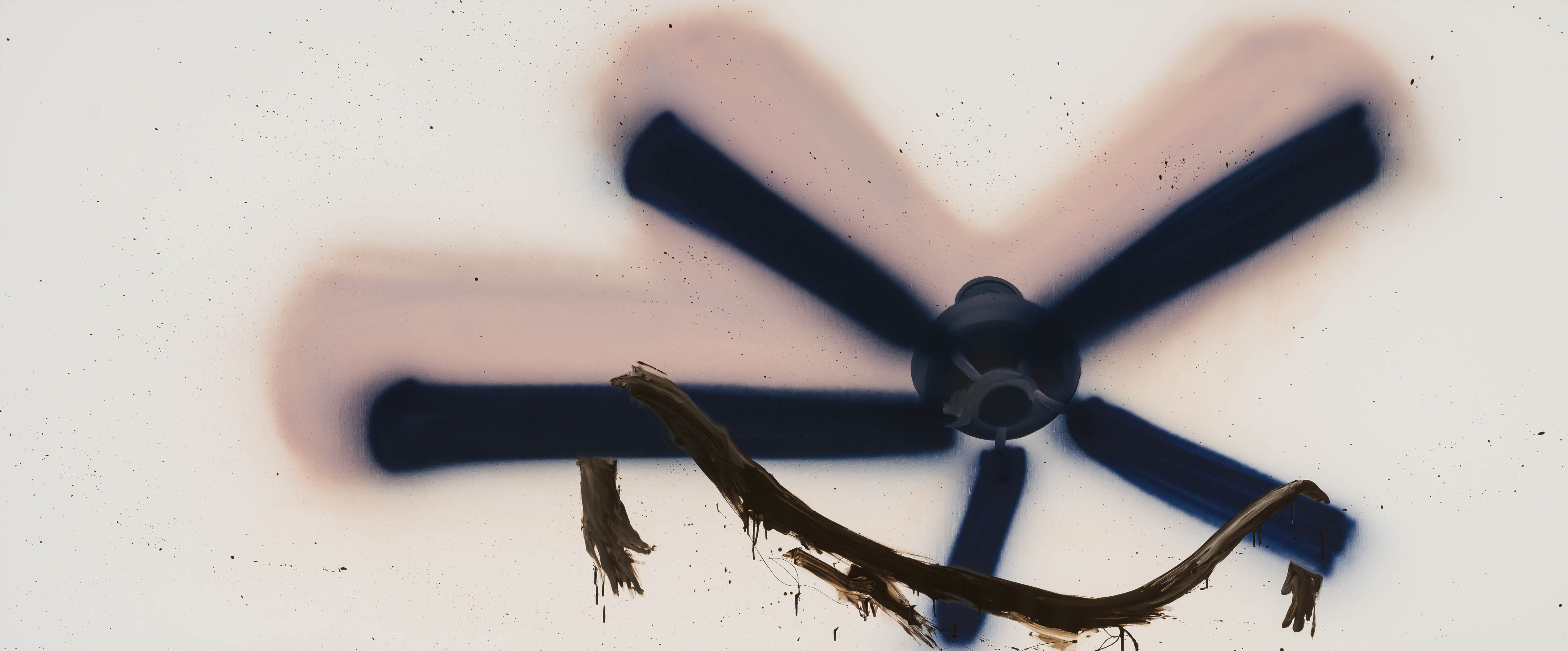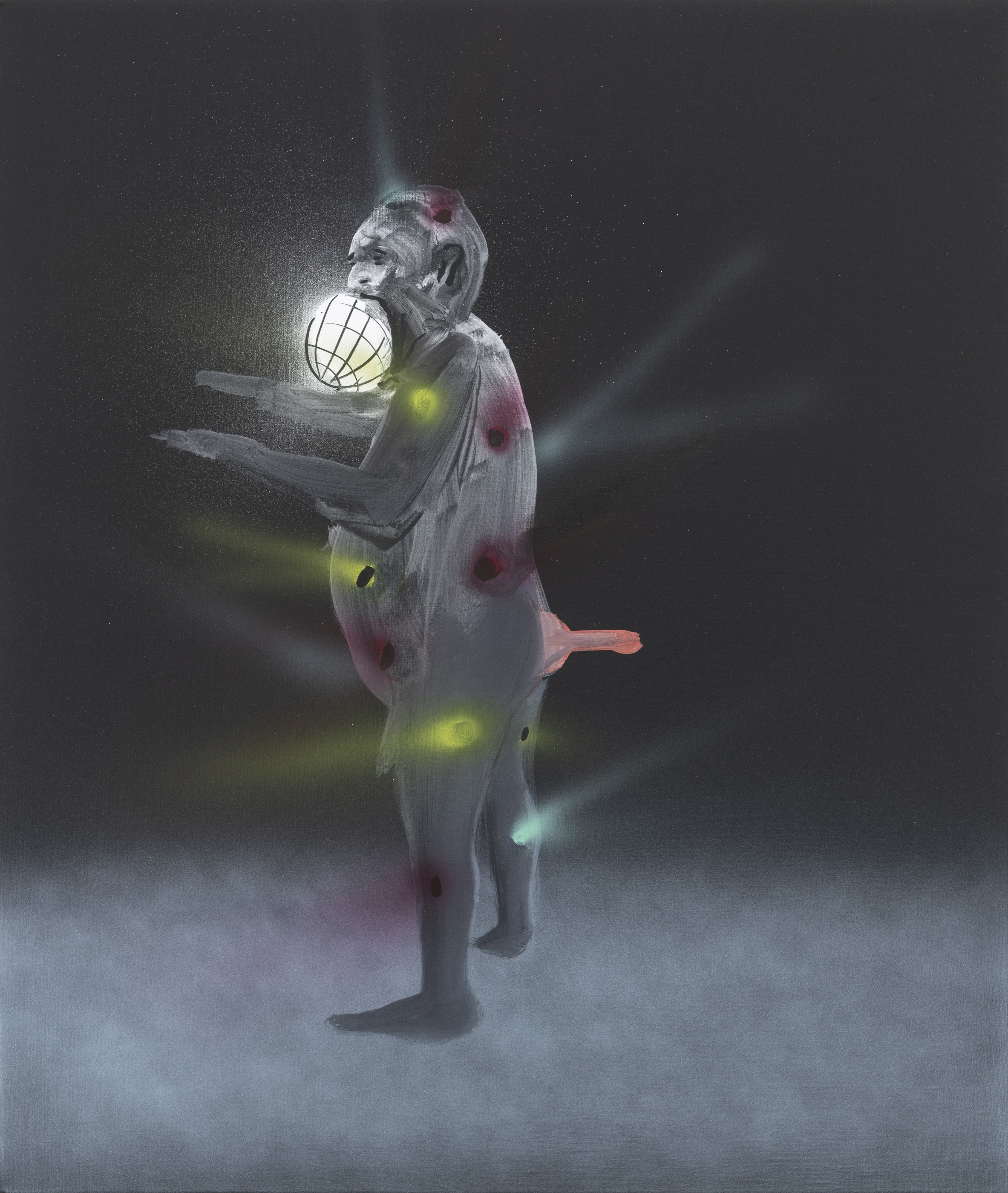Overview
Tala Madani’s darkly humorous works show enigmatic scenes featuring smeared out female figures, ceiling fans and ominous shadows. Death Fan at KM21 marks Tala Madani’s first major solo exhibition in the Netherlands, bringing together paintings and video animations.
Tala Madani’s darkly humorous works show enigmatic scenes featuring smeared out female figures, ceiling fans and ominous shadows. Death Fan at KM21 marks Tala Madani’s first major solo exhibition in the Netherlands, bringing together paintings and video animations.
There is an uncomfortable humour about Tala Madani’s work, which aligns repulsion with empathy, and intimacy with the grotesque. Madani depicts primary urges and desires, unhampered by any conventions or social norms. Death Fan presents a selection of paintings and animations that punctuate the tension between comedy and humiliation.
Shit moms
Madani is known for work that deconstructs and satirises preconceived roles and stereotypes surrounding masculinity. Earlier work was largely populated by farcical male figures in all kinds of awkward situations. To Madani, they symbolise the ‘everyman’.
In recent years, Madani has introduced female figures (shit moms) in her work, in a contemporary take on the mother-and-child motif common in the history of art. The brown smears that shape the mothers seem to refer to excrement, and reduce them to amorphous apparitions devoid of internal organs, womb or spine. The term ‘shit mom’ can also be taken to mean ‘bad mother’, a taboo in our society.
Fans
Recently Madani produced a series of paintings of ceiling fans. Fans have long been a subject of fascination for the artist, as sinister objects that literally hang over us, slicing through the air like knives. Fans also gave Madani the opportunity to re-examine the air as a new site for dread and the unknown. The sense of menace in this series seems to appeal to current world circumstances.
Concrete Suicides
In Concrete Suicides (2022), Tala Madani’s new series of paintings, we return over and over to a stretch of pavement, rendered in oil. On the speckled canvases – each equivalent in scale to that of a human body – we observe the shadow of a building. We come back at different times of the day, perhaps over the course of an after- noon, maybe several days or months. An outline of an anonymous figure looms on the ledge of the building’s roof. Until there is no figure. Only a wash of carmine.
Just as the shadows hold the figure in a purgatorial state, we too are kept in a kind of halfway house: watching, waiting, petrified. In such stasis, we become participants in the certainty that impinges on the present. Why else not look toward the sky? Why else keep our gaze cast to the floor, glued to the shadows?
Here, death exists on one of two levels – an approximate speculation of its qualities, or a half impression of its messy tangibles. Like the inverse of Caspar David Friedrich’s Wanderer above the Sea of Fog (1818), whose Romantic figure ascends to great heights to confront the sublime, Madani’s anti-hero knows better: it is found in the crash and its abject collateral (which via the act painting is analogous to an afterbirth).
Concrete Suicides is emphatically not a forensic crime scene. The series is rather driven by an impulse to negotiate between the ambivalent orders of becoming and annihilation and re-becoming – to confront the unsolvable. Every artwork is a place of impact that compels our return.



